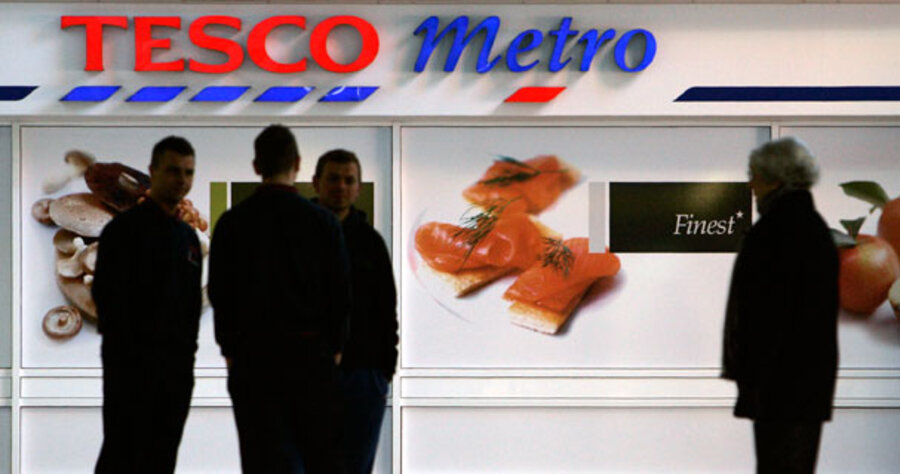Tesco tries out carbon labels
Loading...
When comparison shopping for groceries, you may soon have something to think about other than price and calories: carbon emissions.
The UK-based grocery chain Tesco announced last week that it will be testing out "carbon footprint" labels for 20 of its products, from potatoes to orange-juice to lightbulbs, that will display the amount of greenhouse gases produced over the the items lifecycle.
Tesco, the world's fourth-largest retailer (which runs shops called Fresh & Easy in the Western US ), is working with The Carbon Trust, a company funded by the British government that seeks to reduce greenhouse gas emissions. The Carbon Trust's Carbon Reduction Labels carry with them an endorsement from the Carbon Trust and a promise to reduce carbon emissions of that product within two years.
"We're delighted to be taking this major step with the Carbon Trust," said Tesco chief executive Terry Leahy in a press release. "We want to give our customers the power to make informed green choices for their weekly shop, and enlist their help in working towards a revolution in green consumption. We encourage all of our suppliers and competitors to support the Carbon Trust in this collaboration."
According to Reuters, Tesco has not yet announced plans for carbon labels on all of the products it sells, which number in the tens of thousands, partly because of the difficulty of assessing an item's carbon footprint.
"Let's see what the response to this is and in the meantime we'll measure the emissions of more products," said David North, Tesco's community and government director.
"This is a pilot, it has to be a pilot because we have to be sure it works. There isn't consensus about every piece of data and you wouldn't expect there to be."
Coming up with an exact number to place on a carbon label can be tricky, as it must calculate the emissions caused by producing the good and transporting it to the store's shelf, as well as the emissions caused by the customer's use and disposal of the item. In Feburary, The New Yorker's Michael Specter looked at Tesco's plans and described the calculations as "dazzlingly complex."
Should the carbon label on a jar of peanut butter include the emissions caused by the fertilizer, calcium, and potassium applied to the original crop of peanuts? What about the energy used to boil the peanuts once they have been harvested, or to mold the jar and print the labels? Seen this way, carbon costs multiply rapidly.
Despite the complexity, Tesco and the Carbon Trust have managed to come up with some precise numbers. For instance, the label on a liter of Tesco orange juice from concentrate has a footprint 260 grams per 250 milliliter serving. That works out to about 2.3 pounds of carbon dioxide for a quarter gallon. By comparison, the same amount of Tesco "100% Pure Squeezed" orange juice has a footprint of about 3.2 pounds.
Another example: A 100-watt Tesco incandescent bulb produces about 120 pounds of CO2 per thousand hours of use. A 20-watt CFL, which throws out about the same amount of light, produces 26 pounds,
To put things in perspective, burning through a gallon of gasoline produces about 20 pounds of CO2. The average Briton emits about 11 tons of CO2 annually; the average American emits twice that.
Will we see carbon labels in the US anytime soon? Don't hold your breath (even if doing so does briefly reduce your CO2 emissions). Tesco has been talking about carbon labels for at least two years now. But we may be moving in that direction. In California, state representative Ira Ruskin has introduced AB 2538, "The Carbon Labeling Act of 2008," for action by the California State Legislature.





